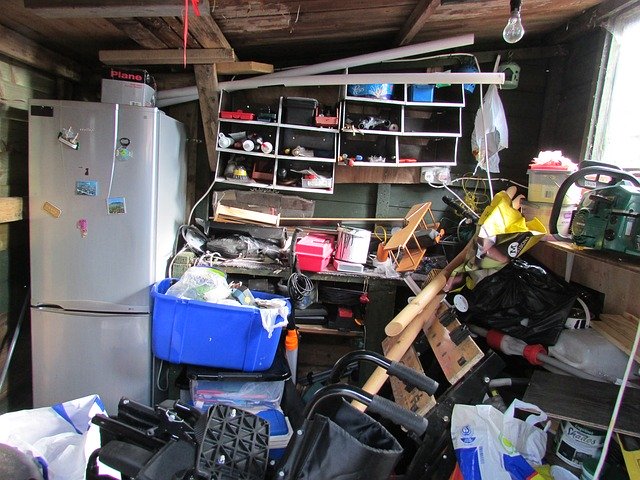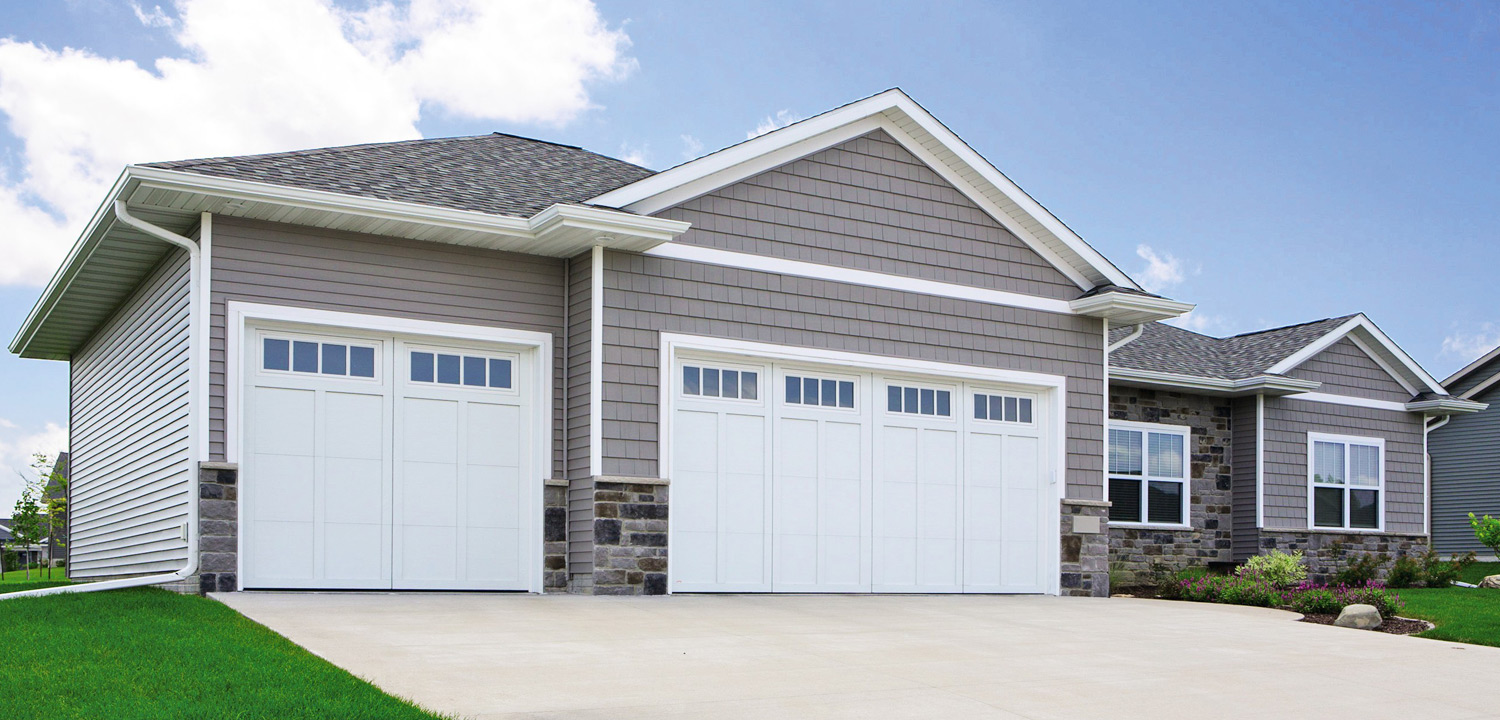Opting for garage insulation using recycled materials not only benefits the environment but also your pocket. By repurposing materials like denim, newspapers, or even old clothing, you can effectively insulate your garage while reducing waste. This eco-friendly approach provides a cost-effective solution that helps in maintaining a comfortable temperature in your garage year-round. Using recycled materials for insulation aligns with sustainable living practices, contributing to a greener future for all. Embrace this environmentally conscious choice for your garage insulation needs and make a positive impact on both your surroundings and your budget.
Key Takeaways
- Opt for eco-friendly insulation materials like recycled denim or cellulose to reduce environmental impact and improve energy efficiency.
- Understand the importance of R-values in insulation to ensure effective temperature regulation in your garage.
- Consider using recycled materials such as denim, cellulose, or fiberglass for insulation to support sustainability efforts.
- Prioritize safety when handling recycled insulation materials by wearing protective gear and following proper disposal guidelines.
- Follow recommended installation techniques for recycled insulation to maximize its effectiveness and durability.
- Address challenges like moisture resistance and pest control when using recycled insulation by exploring sustainable options like eco-friendly sprays or barriers.
Benefits of Eco-Friendly Insulation
Reduced Energy Bills
Insulation pros include significant reductions in energy bills. By choosing the right insulation material, homeowners can save a substantial amount annually. Monitoring energy consumption pre and post-installation provides tangible evidence of cost savings. Long-term benefits encompass continuous energy efficiency and financial savings over time.
Interior Comfort Increase
Insulation directly impacts temperature regulation within the garage, ensuring a comfortable environment year-round. Properly insulated garages maintain consistent temperatures, enhancing overall comfort levels for occupants. A well-insulated garage contributes to a cozy atmosphere, making it a pleasant space to spend time in.
Enhanced Noise Control
One of the advantages of eco-friendly insulation is its ability to reduce external noise disturbances. Recycled materials such as cellulose effectively dampen sound, creating a quieter indoor environment. To optimize noise control, ensure thorough insulation coverage in all areas, including walls and ceilings.
Boost in Resale Value
Installing eco-friendly insulation can significantly increase the resale value of a property. Sustainable insulation choices not only benefit the environment but also enhance the property’s attractiveness to potential buyers. Insulation serves as a valuable selling point, showcasing the property’s energy efficiency and sustainability features.
Understanding Insulation and R-Values
Basics of R-Values
R-values measure insulation materials’ ability to resist heat flow, crucial for maintaining a comfortable indoor temperature. Different materials have varying R-values, determining their effectiveness in insulating spaces. When selecting insulation for your garage, consider the material’s R-value to ensure optimal performance.
Insulation materials like fiberglass, cellulose, and foam board offer different R-values suitable for garage insulation. Fiberglass typically has an R-value ranging from 2.2 to 2.7 per inch, while cellulose provides around 3.2 to 3.8 per inch. Foam board insulation boasts higher R-values, usually between 4 and 6 per inch. Choosing the right R-value ensures efficient insulation against extreme temperatures in your garage.
Importance for Garages
Insulating your garage is essential for improving energy efficiency at home by reducing heat loss through walls and ceilings. Proper insulation helps maintain consistent temperatures inside the garage, preventing energy wastage due to temperature fluctuations. By insulating your garage effectively, you can lower heating and cooling costs throughout the year.
Moreover, insulation plays a vital role in protecting items stored in the garage from extreme temperatures. Items such as tools, equipment, and vehicles are susceptible to damage caused by temperature variations. Insulation helps create a stable environment that safeguards these belongings from moisture, mold, and temperature-related wear and tear.
Insulation also contributes to maintaining a comfortable working environment in the garage by regulating temperatures. Whether you use the space as a workshop, home gym, or storage area, proper insulation ensures a pleasant atmosphere year-round. Insulated garages are less prone to temperature extremes that can affect the structural integrity of the building.
Types of Recycled Insulation Materials
Fiberglass Options
Fiberglass insulation options for garages vary in density and R-values, offering versatility. While cost-effective, fiberglass may cause skin irritation during installation. Selecting the right type involves considering R-value and budget constraints.
Cellulose Choices
Cellulose insulation, made from recycled paper, provides excellent thermal performance. Its fire-retardant properties make it a safe choice for homes. Different types include loose-fill and dense-packed cellulose, each offering efficient insulation solutions. Eco-conscious homeowners prefer cellulose due to its environmental benefits.
Rigid Foam Varieties
Rigid foam insulation, available in polystyrene or polyurethane forms, offers high R-values. Expanded polystyrene (EPS) and extruded polystyrene (XPS) provide durability and moisture resistance. Polyurethane foam boards offer superior insulation but come at a higher cost. Select the best option based on moisture levels in the garage.
Spray Foam Solutions
Spray foam insulation is popular for its ability to seal gaps effectively, enhancing energy efficiency. It expands upon application to fill cavities and crevices thoroughly. The closed-cell spray foam variety provides a higher R-value than open-cell options. Consider the application method and desired R-value when opting for spray foam.
Safe Handling of Recycled Materials
Safety Gear
When handling recycled insulation materials, it is crucial to prioritize safety. Essential safety gear includes protective gloves, goggles, masks, and coveralls. These items shield individuals from potential skin irritation, respiratory issues, and eye injuries.
For insulation installation, protecting oneself is paramount to prevent any health risks associated with handling recycled materials. Wearing safety gear not only ensures personal well-being but also promotes a safe working environment for all involved in the project.
Choosing the right safety gear for insulation projects involves considering factors such as material compatibility, durability, and proper fit. Opt for high-quality gear that meets industry standards to guarantee maximum protection during handling and installation.
Material Handling Tips
To safely handle different types of insulation materials, always follow specific guidelines provided by manufacturers. Fiberglass insulation should be handled with care to avoid skin irritation caused by its tiny glass fibers. Wear long sleeves and pants to minimize direct contact.
When storing insulation products, ensure they are kept in a dry, cool area away from moisture and direct sunlight. Avoid compressing or bending the materials, as this can impact their effectiveness when installed in your garage.
Proper transport and storage of insulation materials involve using appropriate containers or bags to prevent damage during handling. Avoid dragging or dropping the materials, as this can compromise their integrity and overall performance when insulating your garage.
Installation Techniques for Recycled Insulation
Preparing the Garage
To prepare the garage for insulation installation, start by cleaning and decluttering the space thoroughly. Remove any items obstructing access to walls and ceilings. Assess the garage’s condition by checking for leaks, drafts, and existing insulation.
- Decluttering the garage is crucial for easy installation.
- Cleaning ensures a smooth surface for insulation to adhere to.
- Check for any structural issues that may affect insulation effectiveness.
Installing Panels
When installing insulation panels, begin by measuring and cutting them to fit the walls or ceiling. Secure the panels using appropriate adhesives or fasteners. Avoid common mistakes like leaving gaps between panels or compressing them too tightly.
- Measure and cut panels accurately before installation.
- Use recommended adhesives or fasteners for secure attachment.
- Ensure panels are fitted snugly without gaps for maximum efficiency.
Applying Spray Foam
For spray foam insulation, equip yourself with safety gear, including goggles and gloves. Apply the foam evenly across surfaces, starting from the top down. Maintain a consistent distance while spraying to achieve uniform coverage.
- Safety gear such as goggles and gloves are essential during application.
- Start spraying from the top to prevent uneven distribution.
- Maintain a steady hand and distance for consistent coverage.
Securing Fiberglass or Cellulose
Securing fiberglass insulation involves stapling it in place, ensuring no gaps or sagging. For cellulose, use a blowing machine for even distribution. Proper installation techniques are vital to prevent shifting or settling over time.
- Staple fiberglass securely without leaving gaps.
- Use a blowing machine for cellulose insulation to ensure uniformity.
- Proper installation prevents insulation from shifting or compacting later on.
Challenges in Using Recycled Insulation
Material Compatibility
To ensure unique insulation challenges are addressed, it’s crucial to consider the compatibility of insulation materials with garage structures. Combining different materials like resistant insulation types requires careful evaluation. Avoid issues by verifying compatibility through manufacturers’ recommendations.
When mixing various insulation materials, assess their compatibility based on factors like moisture resistance and structural support. Ensure that the materials adhere well to each other and the garage walls. By following guidelines, you can prevent unique insulation challenges arising from incompatible material combinations.
Considerations for avoiding material compatibility issues include checking for any chemical reactions between different insulation types. It’s essential to verify that the materials won’t degrade or lose effectiveness when used together. By conducting thorough research and consulting experts, you can mitigate resistant insulation concerns effectively.
Durability Concerns
Common durability concerns with garage insulation revolve around factors like moisture exposure and temperature fluctuations. The longevity of insulation materials can be affected by poor installation practices and inadequate maintenance. To address these concerns, prioritize selecting durable materials suitable for garage environments.
Factors impacting the durability of insulation include the quality of installation, exposure to moisture, and temperature changes. Proper ventilation and sealing gaps can contribute to prolonging the lifespan of insulation in garages. Regular inspections and repairs help maintain the integrity of the insulation over time.
Tips for maintaining and enhancing the durability of garage insulation involve periodic checks for signs of wear or damage. Address any issues promptly to prevent further deterioration of the insulation. By investing in high-quality materials and following recommended maintenance practices, you can extend the lifespan of your garage insulation effectively.
Energy Efficiency Factors
Key factors influencing the energy efficiency of garage insulation include the thickness of the material and its insulating properties. Thicker insulation with higher R-values provides better thermal resistance, enhancing energy efficiency. Choose materials that offer optimal thermal performance for maximum energy savings.
Insulation thickness plays a vital role in regulating indoor temperatures and reducing energy consumption in garages. Selecting resistant insulation materials designed for energy efficiency helps minimize heat transfer and maintain comfortable conditions inside the space. To maximize energy savings, focus on insulating areas prone to heat loss or gain effectively.
Tips for maximizing energy efficiency through efficient garage insulation involve sealing air leaks and ensuring proper installation techniques. By addressing potential gaps or weak points in the insulation, you can enhance its performance and reduce energy wastage significantly.
Sustainable Garage Insulation Options
Door Panel Solutions
Insulating garage doors is crucial for enhancing energy efficiency and maintaining a comfortable indoor temperature. By insulating garage door panels, homeowners can reduce heat loss and save on energy bills. Different solutions such as foam board insulation or reflective foil insulation are popular choices for this purpose. These materials are easy to install and offer effective thermal resistance.
When considering insulating garage door panels, it’s essential to choose the right type of insulation based on the climate and specific needs of the garage. Foam board insulation provides excellent thermal performance and durability, ideal for colder climates. On the other hand, reflective foil insulation is more suitable for warmer regions, reflecting heat away from the garage interior.
To ensure optimal results, homeowners should carefully assess their garage’s insulation needs before selecting a door panel insulation solution. Factors such as R-value, ease of installation, and moisture resistance should be taken into account when choosing the most suitable option.
Whole Garage Approaches
Embracing a whole garage insulation approach involves insulating all areas of the garage, including walls, ceiling, and floor. This comprehensive strategy offers numerous benefits, such as improved energy efficiency, enhanced comfort, and noise reduction. Insulating the entire garage helps maintain consistent temperatures throughout the space.
Insulating all areas of the garage provides a barrier against outdoor temperatures, preventing heat loss in winter and heat gain in summer. By adopting a holistic approach to garage insulation, homeowners can create a more energy-efficient and comfortable environment year-round.
When implementing a whole garage insulation project, it’s important to prioritize areas that contribute significantly to heat transfer. Insulating walls, ceilings, and floors with appropriate materials such as fiberglass batts or spray foam insulation can significantly enhance the garage’s thermal performance.
Effective Eco-Friendly Insulation Solutions
Combining Materials
When insulating a garage, combining different insulation materials offers several advantages. By using a mix of materials, such as fiberglass and foam boards, you can maximize the benefits each type provides. This approach ensures comprehensive coverage and addresses various insulation needs.
Combining materials enhances insulation performance by filling gaps and providing different levels of protection. For example, pairing fiberglass batts with reflective foil insulation can improve thermal resistance and prevent heat loss in the garage. This combination creates a barrier against both conduction and radiant heat transfer.
- Effective Combinations for Garage Insulation:
- Fiberglass batts with spray foam insulation
- Reflective foil insulation with rigid foam boards
- Cellulose insulation with mineral wool batts
Professional vs. DIY Installation
Deciding between professional insulation installation and a DIY approach involves considering several factors. While DIY projects offer cost savings and flexibility, professional installation ensures accuracy and efficiency. Opting for professional services is advisable for complex projects or when dealing with hard-to-reach areas.
Professional installation guarantees proper application of insulation materials, minimizing the risk of gaps or inadequate coverage. Professionals have the expertise to address specific challenges, such as moisture control or ventilation requirements. DIY projects are suitable for simple installations but may lack the precision and thoroughness of professional work.
- Considerations for Choosing Installation Method:
- DIY Installation:
- Cost-effective for small projects
- Suitable for accessible areas
- Professional Installation:
- Ensures precise application
- Recommended for intricate insulation setups
Contacting a Garage Insulation Expert
When to Call a Professional
- Experiencing High Energy Bills: If your garage remains cold despite heating efforts, a professional can assess insulation needs.
- Noticing Drafts or Cold Spots: Drafty areas or uneven temperatures signal poor insulation, requiring expert evaluation.
- Planning Major Renovations: Before significant upgrades, consult an expert for efficient insulation solutions.
Finding the right professional is crucial. Seek experts with certifications and experience in garage insulation.
Choosing the Right Expert
Factors like expertise, reputation, and pricing influence your choice of an insulation expert. Look for:
- Certifications and Licenses: Ensure the expert holds relevant qualifications for quality work.
- Experience with Garage Insulation: Prioritize professionals with a track record in garage-specific projects.
- References and Reviews: Check testimonials to gauge the expert’s reliability and customer satisfaction.
Vetting potential experts involves requesting quotes, checking references, and verifying credentials. Hire based on expertise and compatibility with your project requirements.
Final Remarks
You’ve now grasped the benefits, types, challenges, and installation techniques of using recycled materials for garage insulation. Sustainable options are within reach, offering effective eco-friendly solutions. Contacting a garage insulation expert can further guide you in implementing these practices. Take the step towards a greener approach to insulation today!
Frequently Asked Questions
Can recycled insulation materials effectively insulate a garage?
Recycled insulation materials can provide effective insulation for garages when installed properly. They offer similar R-values to traditional insulation, contributing to energy efficiency and cost savings.
Is it safe to handle recycled insulation materials on my own?
While handling recycled insulation materials, it’s crucial to wear protective gear like gloves and masks. Follow safety guidelines provided by manufacturers to minimize risks and ensure proper installation without compromising your health.
How do sustainable garage insulation options benefit the environment?
Sustainable garage insulation options help reduce carbon footprint by utilizing recycled materials, promoting eco-friendliness. By choosing these options, you contribute to waste reduction efforts and support a more environmentally conscious approach to home improvement projects.
What are the challenges one might face when using recycled insulation for a garage?
Challenges in using recycled insulation may include variations in material quality, compatibility with existing structures, and availability of specific types of recycled materials. Proper research, planning, and consulting with experts can help overcome these challenges effectively.
Why should I contact a garage insulation expert for using recycled materials?
Garage insulation experts possess the knowledge and experience required to assess your specific needs accurately. Their expertise ensures proper selection, installation, and optimization of recycled insulation materials, leading to efficient energy usage and long-term cost savings.






